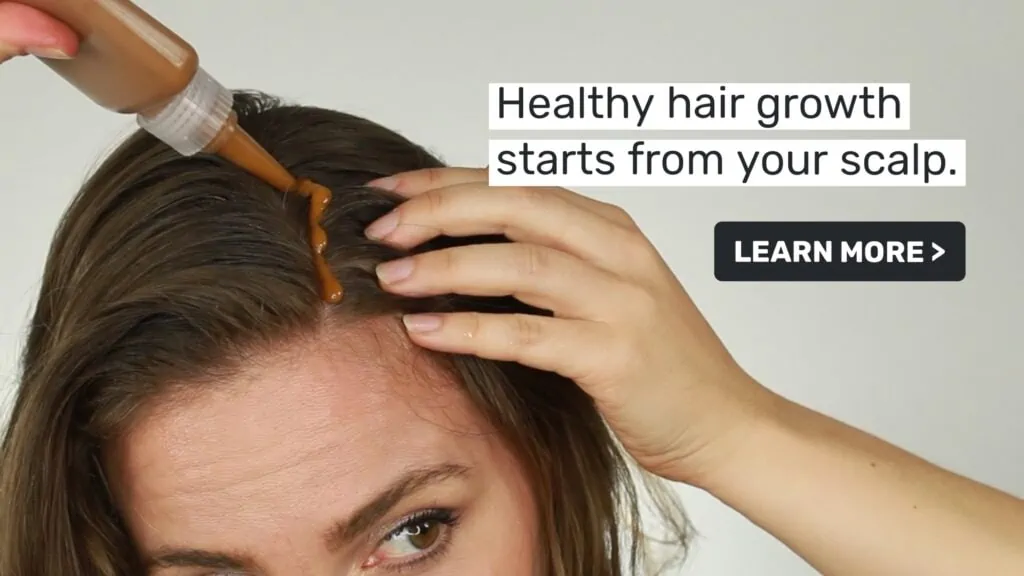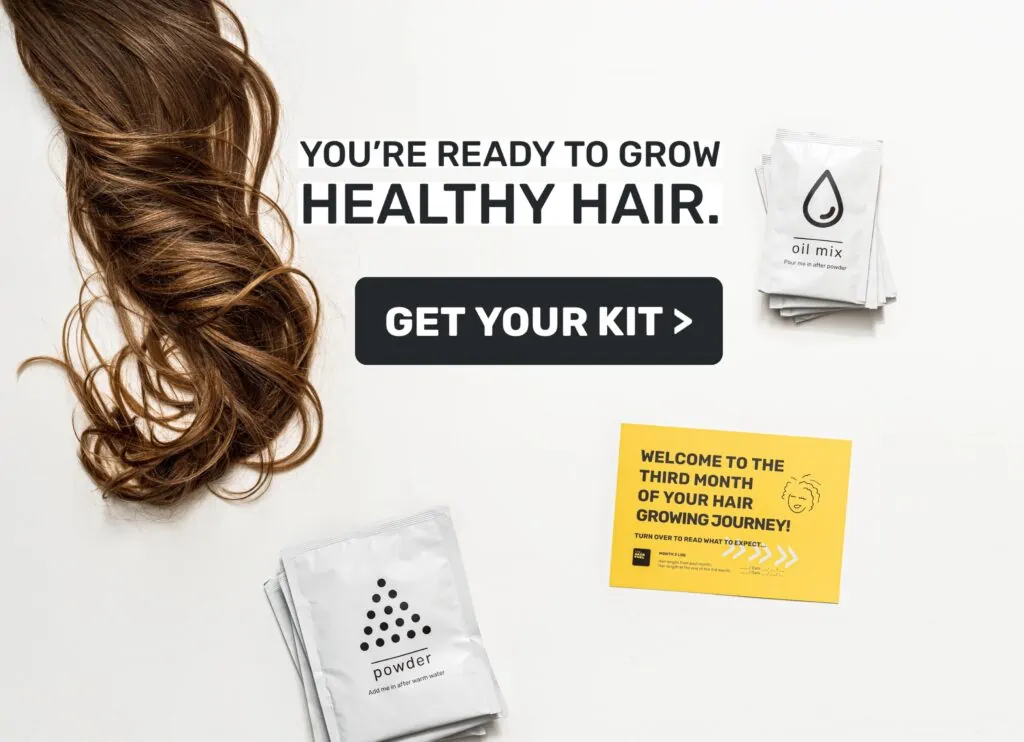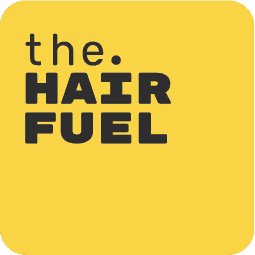Our scalp and hair, just like our skin, accumulate dust and dirt everyday. It is therefore normal to wash it regularly to remove these build ups. Some people prefer to wash hair on a daily basis with a shampoo as it cleans up scalp and hair, sweat build up, styling products and dirt. But the question now is, is it safe to apply shampoo everyday? Will washing your hair every day cause hair loss? Well, let’s find out.
Let’s start by looking at the basic ingredients of a shampoo.
Detergents
Similar to soap, shampoo’s primary ingredient is a detergent. The word itself comes from Latin “detergere” – which means “to wipe away from” This component, also known as ‘surfactants’ works by binding itself to the sebum in hair and is soluble in water so oil is removed along with any buildup it has gathered. Surfactants decrease the tension between the molecules and break through a surface. This is how surfactants penetrate by breaking that top lipid layer of oily molecules therefore removing the excess oil from your hair. This ingredient essentially acts as the cleaning agent.
Shampoo makers use different surfactants , typically combining them with one another to achieve a desired result: such as shampoos for oily hair, dyed or curly hair. However, some surfactants are harsher than the other, gentler ones. So, do learn the type of surfactants in your shampoo to avoid damaging your locks.
Examples of surfactants in shampoo:
Harsh surfactants you should avoid:
- sodium laureth, myreth, lauryl sulfate
- sodium coco sulfate
- ammonium lauryl and laureth sulfate
Gentler surfactants to look for:
- sodium cocyl isethionate
- cocamidopropyl betaine
- sodium lauryl sulfoacetate
- sodium lauryl glucose carboxylate
Foaming agents
There is a notion that a less foaming shampoo does not clean as much. That, of course, is a myth. A foaming agent is added to a shampoo to help spread the detergent onto scalp and hair which provides more coverage for the detergent to do its work. Thus, the degree of lather in any shampoo does not determine its cleaning ability.
Conditioners
While shampoos are intended to clean hair, they can be drying. Thus, shampoos are added with humectants or moisturising agents to provide hair manageability, gloss and antistatic property. Note that humectants are agents to preserve moisture. The commonly used conditioning agent includes hydrolyzed animal protein, glycerin, dimethicone, simethicone, polyvinylpyrrolidone, propylene glycol, and stearalkonium chloride. Some of these are silicones which provide quick fixes to hair, but with prolonged use, will make hair brittle. It is always helpful to look at the list of ingredients to know what’s in your hair care bottle.

Thickeners and Opacifiers
To make shampoos more inviting to the consumers’ naked eye, thickeners are added increasing the product’s viscosity. Some examples of such thickeners are sodium chloride, PEG-150 distearate, polyacrylate amongst others. People tend to prefer a shampoo which appears thick in consistency.
Opacifiers on the other hand are added to shampoos to create a rich, creamy luxurious feel and appearance, making the shampoo more appealing. Some examples of opacifiers are:
- tyrene/acrylate copolymer
- ammonium xylenesulfonate
Overall, both of these ingredients do not offer improved cleansing but add a pleasing optical effect.
Sequestering agents
When calcium or magnesium in tap water reacts to certain fatty acids in detergents or surfactants this creates calcium stearate or magnesium stearate, commonly known as “soap scum”. To avoid this from happening to hair, shampoo have sequestering agents added to them. Sequestering agents close the loop in certain molecules which prevents them from reacting with external atoms An example of such agent is sodium triphosphate. Without this ingredient, shampoos will react with water and leave a scum film and build up on the hair shaft making it dull and lifeless. It will also lead to itching and eventually some symptoms of seborrheic dermatitis or dandruff. Sequestering agents are what make shampoo different from bar soap.
Fragrances
Scent is a very powerful tool. It arouses our senses and evokes different emotions and feelings. For that reason, adding fragrance to products and in this case shampoo, is a big factor in that experience. It can even influence buying decisions and create associative habits that will make you crave the smell therefore driving the frequency of usage.
Fragrances added to shampoos are either synthetic or essential oils. Unfortunately, the specifics of fragrances used in shampoos are undisclosed. It will generally indicate “fragrance” or “parfum” in the ingredients list which would mean that it contains a mixture of different scent chemicals which could be harmful to your hair in the long run. Going for a fragrance-free shampoo is a highly recommended option.
Preservatives
To inhibit microbial growth in shampoos, preservatives are added. This works by releasing formaldehyde to kill the germs. Without preservatives products would only last a few weeks or month, so adding them greatly improves shelf life. However, important to note that formaldehyde has been found to lead to hair loss – as some of the manufacturers have been using it in their formula, especially those used as hair straightening agents and keratin treatments. You are better off choosing clean products that don’t contain these, even though it may mean that your products will last a little shorter – you can always buy smaller bottles instead.
Most widely used preservatives in shampoos are DMDM hydantoin (commercial name Glydant, also disclosed as methylene glycol that reacts with water and makes molecules of formaldehyde) imidazolidinyl urea, diazolidinyl urea, quaternium 15, bronopol, 5-bromo-5-nitro-1,3 dioxane, and hydroxymethylglycinate.
Specialty additives
As you can see in shampoo commercials, some product variants target specific hair conditions as their differentiating factor. To make that happen, shampoo formulas have specific additives to promote extra attributes, such as enhanced cleaning performance or for marketing claims. For example, caffeine is commonly found in shampoos that promise to help with hair loss. However as the shampoo only spends a short amount of time on your scalp, caffeine in shampoos is often insufficient to bring about any considerable hair re-growth results. Generally speaking, specialty additives are found at the end of the ingredients list, meaning that their concentration in the formula is low. The latter doesn’t necessarily mean they are not effective: some components are only needed in lower doses to be effective.

pH Adjusters
Our hair, like our skin, has an alkaline or acidity level which is measured by pH. Most shampoos have a higher pH than our hair’s pH of 3.5 – 5.5 which is on the acidic side. The higher the level, the more alkaline it is which will cause the hair shaft to swell and the cuticles of the hair to be open as a pine cone. In that condition, hair loosens its protective cuticle, resulting in frizziness and breakage. To prevent that from happening, pH adjusters are added to shampoos to lessen the pH levels. Thus it is important to use mildly acidic or hair care products with lower pH levels to keep the cuticle closed, for the hair shaft to remain smooth and shiny.
All the above combined, you have your regular shampoo. Washing the hair and keeping it clean is just so refreshing, but with all the various chemicals mixed together in your shampoo, these could make your hair dry and brittle in the long run, while some products can even lead to hair loss. As a result of using products with certain ingredients hair becomes prone to breakage and split ends. Dry scalp can also lead to itchiness and may even lead to serious scalp conditions that may trigger hair fall that is beyond the natural hair loss which occurs daily where 100-150 hair falls out every day (being replaced with new hair in a natural hair growth cycle).
If you are looking to replace shampoo at least on some washdays, you can explore various hair rinses that can help you strengthen your hair as well as keep your scalp fresh and healthy. Examples of such rinses are apple cider vinegar rinse and rice protein water for hair.
It is good to keep our scalp and hair clean but too much could eventually affect your hair’s health. Depending on how much dirt or sebum your hair accumulates you can reduce the frequency of washing your hair to a level that’s comfortable for you. You should also approach buying your shampoo and hair care products with care and attention – and read beyond the front label of marketing claims and promises.
Who we are:
The Hair Fuel is an all-natural hair growth mask created by Laura Sagen, who lost a third of her hair after a terrible visit to a hairdresser while suffering from a life-long condition of PCOS associated with androgenic hair thinning. She developed the formulation rooted in the science of scalp blood flow, which has become The Hair Fuel growth mask. Since then, her company has helped thousands of people like you to start growing healthy hair.
We work closely with our lab and manufacturers to ensure the highest quality product. But a product alone is never enough – so we hold your hand throughout your own, unique hair growth journey. Our flagship product, The Hair Fuel mask coupled with tailored advice, digital tools, and online support is there to help you grow the best hair you can. It’s a big claim – but we’re unafraid to make it. Check out our starter bundles >>
Sources:
- Essentials of Hair Care often Neglected: Hair Cleansing, International Journal of Trichology, (1)
- Shampoo – the overview, Cosmetic Science and Technology, (2)
- The Shampoo pH can Affect the Hair: Myth or Reality?, International Journal of Trichology, (3)
- A Review: Hair Health, Concerns of Shampoo Ingredients and Scalp Nourishing Treatments, Current Pharmaceutical Biotechnology, (4)
- Diffuse hair los associated with selenium (selsun) sulfide shampoo, JAMA Network, (5)
- Effects of a new mild shampoo for preventing hair loss in Asian by a simple hand-held phototrichogram technique, International Journal of Cosmetic Science (6)
- Efficacy and safety of a new formulation kit (shampoo + lotion) containing anti-inflammatory and antioxidant agents to treat hair loss, Dermatologic Therapy (7)
- Efficacy of a cosmetic phyto-caffeine shampoo in female androgenetic alopecia, Dermatology and Venereology (8)
